Wizardry is a series of role-playing video games, developed by Sir-Tech, that were highly influential in the evolution of modern role-playing video games. The original Wizardry was a significant influence on early console role-playing games such as Final Fantasy and Dragon Quest. Originally made for the Apple II, the games were later ported to other platforms. The last game in the original series by Sir-Tech was Wizardry 8, released in 2001. There have since been various spin-off titles developed for the Japanese market.
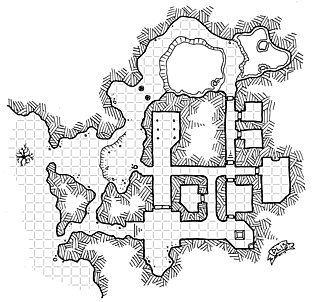
A dungeon crawl is a type of scenario in fantasy role-playing games (RPGs) in which heroes navigate a labyrinth environment, battling various monsters, avoiding traps, solving puzzles, and looting any treasure they may find. Video games and board games which predominantly feature dungeon crawl elements are considered to be a genre.

Tsugunai: Atonement is a 2001 role-playing video game developed by Cattle Call for the PlayStation 2. It was published in Japan by Sony Computer Entertainment and in North America by Atlus USA.
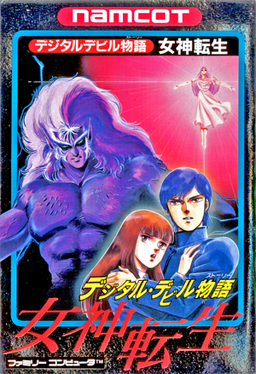
Digital Devil Story: Megami Tensei refers to two distinct role-playing video games based on a trilogy of science fantasy novels by Japanese author Aya Nishitani. One version was developed by Atlus and published by Namco in 1987 for the Famicom—Atlus would go on to create further games in the Megami Tensei franchise. A separate version for personal computers was developed and published by Telenet Japan with assistance from Atlus during the same year.
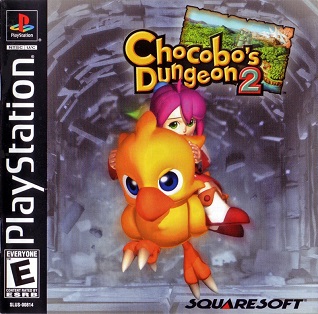
Chocobo's Dungeon 2 is the 1998 role-playing video game by Square for the PlayStation. It is the sequel to 1997's Chocobo's Mysterious Dungeon.
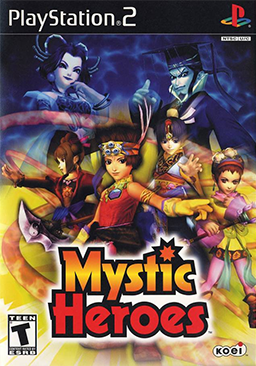
Mystic Heroes is a hack and slash video game developed by Koei. The game is loosely based on Investiture of the Gods, a Chinese supernatural novel about the fall of the Shang Dynasty and the rise of the Zhou Dynasty.

Maken X is a first-person hack and slash video game developed by Atlus for the Dreamcast. It was published by Atlus in Japan in 1999, while Sega localized and released the game overseas in 2000. Gameplay has the Maken—a sentient sword-like being—"brainjacking" or taking control of multiple characters across a variety of levels; combat is primarily based around short-ranged melee attacks, with some characters sporting additional abilities such as ranged attacks.
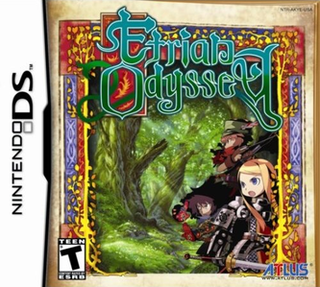
Etrian Odyssey is a 2007 3D dungeon crawler role-playing video game by Atlus for the Nintendo DS. It centers around first-person exploration of a mysterious dungeon known as the Yggdrasil Labyrinth using a player-created party of characters. The game received mixed to positive reviews from critics, who criticized its punishing difficulty as limiting its appeal, but also making its gameplay more rewarding.
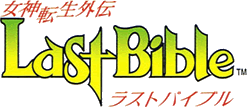
Megami Tensei Gaiden: Last Bible is a role-playing video game series developed by Multimedia Intelligence Transfer, Sega, and Menue, and published by Atlus and Sega for multiple platforms. The first game of the series, Revelations: The Demon Slayer, was released in 1992; this is the only title in the series to have been released in English. After The Demon Slayer, two sequels and five spin-off titles have been released. In the main series titles, players explore the game world and fight monsters in menu-based battles; players can also attempt to recruit monsters to their party, and can fuse two allied monsters into a single new one to try to get stronger monsters. The spin-off title Another Bible is a turn-based strategy game, while Last Bible Special is a role-playing game controlled from a first-person perspective.

Mystery Dungeon: Shiren the Wanderer, originally released in Japan as Fushigi no Dungeon 2: Fūrai no Shiren, is a roguelike video game developed and published by Chunsoft. It is the second entry in the Mystery Dungeon series, following 1993's Torneko no Daibōken. It was originally released for the Super Famicom in 1995 in Japan. Sega published a Nintendo DS remake in 2006 in Japan and in 2008 internationally. The remake was later ported to iOS and Android and published by Spike Chunsoft in 2019.
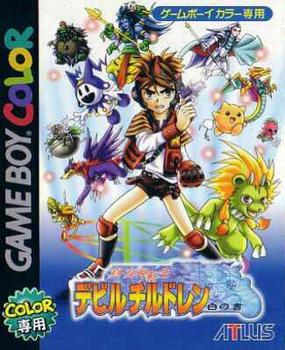
Shin Megami Tensei: Devil Children, also known as DemiKids, is a series of role-playing video games primarily developed by Multimedia Intelligence Transfer and published by Atlus. It is a spin-off from Atlus' Megami Tensei franchise, and began in 2000 with the Game Boy Color games Black Book and Red Book. Five more role-playing games and three games in other genres were released until 2004, followed by no new releases until the 2011 social game Shin Megami Tensei: Devil Children. In addition to the games, the series has been adapted into manga, anime, and a trading card game, and two soundtrack albums have been released by First Smile Entertainment.

MySims Party is a video game developed and published by Electronic Arts as a spinoff to Maxis' The Sims franchise for the Nintendo DS and Wii in 2009. It is the third game in the MySims series. It consists of 50+ mini-games which can be played with up to 4 players. The game was released on March 10, 2009, in North America.
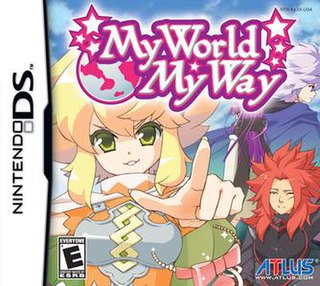
My World, My Way is a role-playing game developed by Global A Entertainment

Etrian Odyssey III: The Drowned City is a 2010 3D dungeon crawler role-playing video game by Atlus for the Nintendo DS. It is a sequel to Etrian Odyssey II: Heroes of Lagaard. Players assume the role of a guild leader, adventuring into the labyrinth to fulfill quests.

Wizardry: Labyrinth of Lost Souls is a video game developed by Acquire and published by Xseed Games for the PlayStation 3, PlayStation Vita, iOS, and Microsoft Windows. The game's Japanese title is Wizardry: Torawareshi Tamashī no Meikyū. Although the Wizardry series was originally developed in the US by Sir-Tech, it has been kept alive in Japan by various developers. The dungeon-crawling role-playing game franchise hadn't been seen in the West since 2001's duo of Wizardry 8 for Windows and Wizardry: Tale of the Forsaken Land for the PlayStation 2.

Dungeon Hunter: Alliance is a hack and slash action role-playing video game developed and published by Gameloft in 2011. The game is a remake of the 2009 iPhone game Dungeon Hunter, with the addition of a multiplayer mode and support for the PlayStation Move controller.

Persona Q: Shadow of the Labyrinth is a role-playing video game developed by Atlus for the Nintendo 3DS. It is part of the Persona series, itself part of the larger Megami Tensei franchise. It was published across all territories in 2014: released in June in Japan, November in North America and Europe, and December in Australia. Atlus published the game in Japan and North America, while NIS America published it in the PAL region.

Etrian Mystery Dungeon is a role-playing video game for the Nintendo 3DS. It was developed by Spike Chunsoft and Atlus, and published by Atlus in Japan on March 5, 2015 and Atlus USA in North America on April 7. It was published by NIS America in Europe on September 11. The game is a crossover between Atlus' Etrian Odyssey series and Spike Chunsoft's Mystery Dungeon series. A sequel, Etrian Mystery Dungeon 2, was released in Japan on August 31, 2017.

The Caligula Effect is a role-playing video game developed by Aquria. It was released for the PlayStation Vita in Japan in June 2016, and by Atlus USA in North America and Europe in May 2017. A remake of the game, The Caligula Effect: Overdose, was released for the PlayStation 4 in Japan in May 2018, and worldwide by NIS America in March 2019 for the PlayStation 4, Nintendo Switch, and Windows. An anime adaptation of the same name premiered in April 2018.

Persona Q2: New Cinema Labyrinth is a 2018 dungeon crawler role-playing video game by Atlus for the Nintendo 3DS. It is a spin-off of the Persona series, itself part of the larger Megami Tensei franchise, and a sequel to Persona Q: Shadow of the Labyrinth featuring the cast from Persona 3, Persona 4, and Persona 5. It was released in Japan in November 2018 and worldwide in June 2019.



















